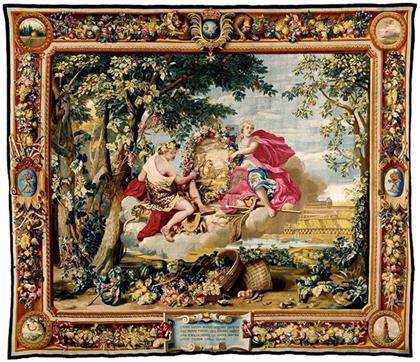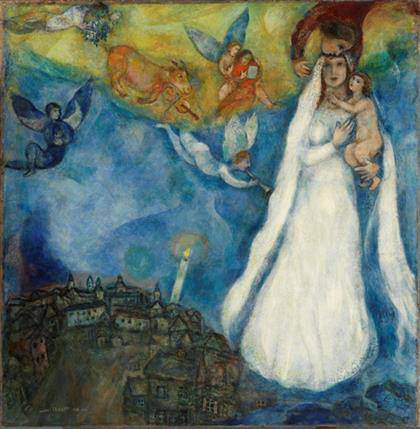
Autumn, before 1669, Gobelins Manufactory (French, 1662 – present). Cartoon attributed to Beaudrin Yvart (French, 1611 – 1690), after Charles Le Brun (French, 1619-1690). Tapestry, wool, silk and gilt metal-wrapped thread. Le Mobilier National, France. Image © Le Mobilier National. Photo by Lawrence Perquis
The Art of Making a Tapestry – Getty Museum
Getty presents ‘Woven Gold: Tapestries of Louis XIV’ ‘Woven Gold: Tapestries of Louis XIV’, exclusively on view at the J. Paul Getty Museum from December 15, 2015 through May 1, 2016, is the first major museum exhibition of tapestries in the western United States in four decades.]]>
Source: J. Paul Getty Museum
The art of tapestry weaving in France blossomed during the reign of Louis XIV (r. 1643-1715). Three hundred years after the death of France’s so-called “Sun King,” the J. Paul Getty Museum showcases 14 monumental tapestries from the French royal collection, revealing the stunning beauty and rich imagery of these monumental works of art.
“Under Louis XIV, tapestry production flourished in France as never before, with the Crown’s tapestry collection growing to be the greatest in early modern Europe,” says Timothy Potts, director of the J. Paul Getty Museum.
The exhibition also features preparatory drawings, related prints, and an enormous cartoon (an oil on canvas painted to scale as a guide to the weavers) alongside the immense hangings. The tapestries in the exhibition were woven after designs by Raphael (Raffaello Sanzio, Italian, 1483-1520), Peter Paul Rubens (Flemish, 1577-1640), Charles Le Brun (French, 1619-1690), and others, and come from the most notable workshops in Europe, including the Gobelins, which rose to preeminence under Louis XIV’s patronage. Several of the best-preserved and most famous examples of Gobelins weaving are on view in the exhibition.
With tapestries arranged chronologically according to the year of their original design (not final production), “Woven Gold” is divided into three sections: early sets of Renaissance tapestries purchased for Louis XIV in the 17th century, sets of tapestries inherited by the king, and new sets of tapestries commissioned by the Crown.
Related content
Getty Museum Presents ‘Power and Pathos: Bronze Sculpture of the Hellenistic World’ (exhibition, 2015)
Follow us on:


